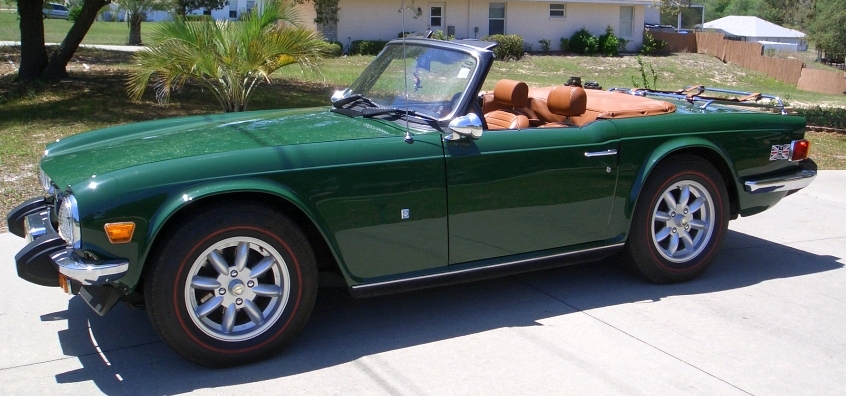We all know about the dreadful Lucas Electronics, or in shorthand:
![]()
But what if they got it right?
Iain Tyrrell talks about how Lucas’s fuel injection system was the bees’ knees, and dominated racing from the late 1950s all the way to the 1980s. Even Ferrari were forced to use them in their monster P3 and P4 Le Mans cars.
Take a few minutes to learn about it, from the master mechanic his own self. Then watch as he makes an old TR6 work properly again.
And by the way, I would take a (Tyrrell-restored) Triumph TR6 into my garage, any day of the week.


Rule Britannia, and all that.



In 1976 I was stationed in the army in Germany and Triumph promoted a deal to US soldiers where they could buy a brand new TR6 for $4,995. AND have it shipped to the US for free. The car would have been built to US specs. I always liked the cut of the TR6 jib and have regretted not taking them up on that offer. A dark blue one with black interior and the UK flag. wowza!
This just in – Lucas to team with Boeing to build electric airliners. Pictures at eleven.
.
My 72 2.4l 911S used the Bosch Mechanical Fuel Injection. With the Giant ugly air cleaner off, The induvial throttle body trumpets made a great sound. However, the box that housed the Injection system had more tiny parts than a Swizz watch and needed regular visits and incantations from the wizard that made it function properly. I’m sure it was also responsible for the Power curve of the engine. ALL the power was between 3.500 to 6,500. It absolutely needed to be driven that way.
My TR4 had Stromberg’s so I can’t speak to the effectiveness Lucas Mechanical Injection, but i’ll take Ians word for it’s effectiveness. At least the Bosch system was FUEL injection and not Petrol – Whatever that is.
Spoken like a True Murkin.
nice looking cars! is the suspension strong enough to transport my gear from home to range?
When Ferrari wished to provide a “customer race car” in the Late-70’s to be raced at LeMans by private entries, they dusted off the shelves in the old showroom-service center located in town, and found those 12-cyl Lucas parts to mount to the 5-litre Berlinetta Boxer motor, and created the 512 BBLM, with beautiful, tall, spun alloy trumpets gracing each side of the motor that were bolted to the throttle bodies that were retained from the Weber carbs. With the injector nozzles mounted about the throttle plates, you could watch the fuel droplets dance on the plates at idle, but you wanted to step back a bit when someone blipped the throttle.
I had a 73 Triumph Spitfire that was a gray market car in 1978. It had the European spec duel carburetors. When I got it the engine ran very rough and the car had a number of electrical problems. I rebuilt the carburetor’s and that cleaned up the rough running engine. The wires were brittle and had many places where the insulation was off and I ended up rewiring the car. I learned the brake system, clutch, overdrive, full tune-up, paint, and top replacement with that car. It was one thing after another. Top speed in 4th gear was 95 mph. Top speed in overdrive was 89 mph. Once I drove it a month trouble free I put a for sale sign on it and swore off English cars for 30 years. A 2011 Mini Cooper S is the reason I will never own a British car again.
Kim, you may WANT a restored TR-6 in your garage but would you FIT into a restored TR-6? They’re awfully small, you know.